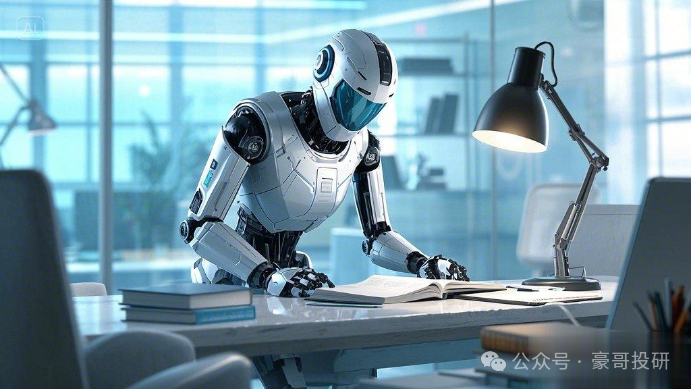Recently, Yushu Technology responded that it has been profitable for at least5 years: this is true.
The humanoid robot industry is experiencing a major boom, with more and more companies releasing positive information.
Earlier, NVIDIA announced the world’s first humanoid robot inference and skill base model at theGTC conference, opening the door to the era of general-purpose robots;
On March26, “Magic Atom” released an end-to-end “Atomic Universe Model” and plans to create1000 applications for humanoid robots;
On March27, Tesla, Boston Dynamics, and other US robotics companies urged the government to establish departments that support the development of the humanoid robot industry…
Many signs indicate that the entire humanoid robot industry is accelerating its development.

As a key support for the development of humanoid robots,AI chips are seeing increasing demand for computing power as the application scenarios for humanoid robots continue to expand and task complexity increases, providing development opportunities forAI chips.
This article summarizes 5 companies that are rapidly growing and are related to these two concepts for discussion.
Note: The following content is for industry exchange only and does not constitute any other advice.
First Company: Cambricon
Core Association:Master Control Chip
Technical Advantage:The chip performs excellently in deep learning and complex computing tasks. The MLU100 chip can process up to32 channels of HD video or decode and intelligently process480fps HD images, enhancing the robot’s real-time perception speed and decision-making ability in complex environments.
Second Company: Allwinner Technology
Core Association:Master Control Chip
Technical Advantage:It is the core chip provider for Xiaomi’s bionic quadruped robot and a close partner of Alibaba’s Tianshu. Some of its chips useRISC-V architecture, providing low power consumption and high concurrency motion control solutions, supporting the processing of large amounts of sensor data and complex algorithm execution generated during humanoid robot motion control.
Third Company: Changguang Huaxin
Core Association:Sensor Chip
Technical Advantage:It is one of the few companies in the world capable of mass-producing high-power LiDAR chips, which can endow humanoid robots with three-dimensional spatial perception capabilities, forming the basis for obstacle avoidance, navigation, and environmental interaction.
Fourth Company: Unisoc
Core Association:Storage Chip
Technical Advantage:It has the capability to design large-capacityDRAM modules, meeting the data storage needs of robots when performing complex tasks. Its developed embeddedDRAM technology can provide ultra-high bandwidth, ultra-low power consumption, and low-latency data interconnect, enhancing the robot’s data transmission and processing capabilities. Current application scenarios are mostly in industrial robots, and the technology can be migrated to the development of humanoid robots.
Fifth Company: Espressif Technology
Core Association:Communication and Connectivity Chip
Technical Advantage:The chip supports wireless communication and can also integrateAI algorithms, supporting offlineAI computation, with overall low power consumption. For example, the ESP32-C6 chip, designed for ultra-low power consumption, has a wake-up time of only a few seconds, suitable for robots that need to remain in standby for long periods but occasionally activate for real-time interaction.
Chips are the core driving force behind the development of humanoid robots, providing powerful computing support that enables them to possess perception capabilities, decision-making abilities, and response efficiency closer to that of humans. The improvement in chip performance is closely linked to the development of the industry, and both markets are interconnected, warranting long-term observation.